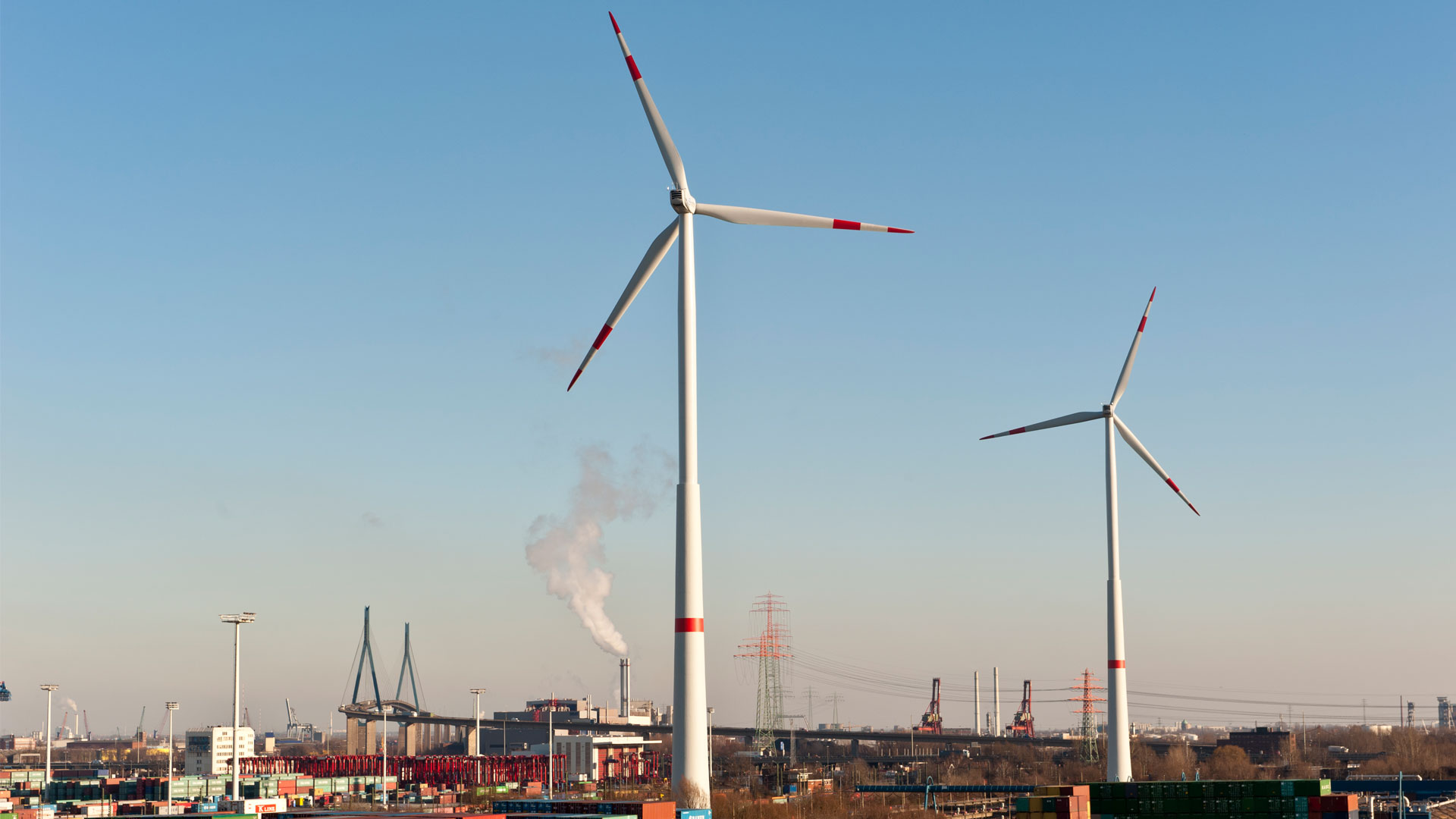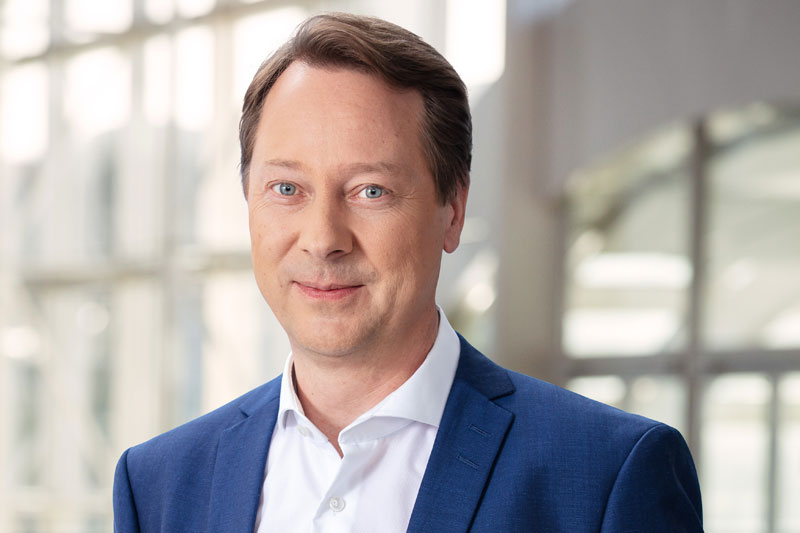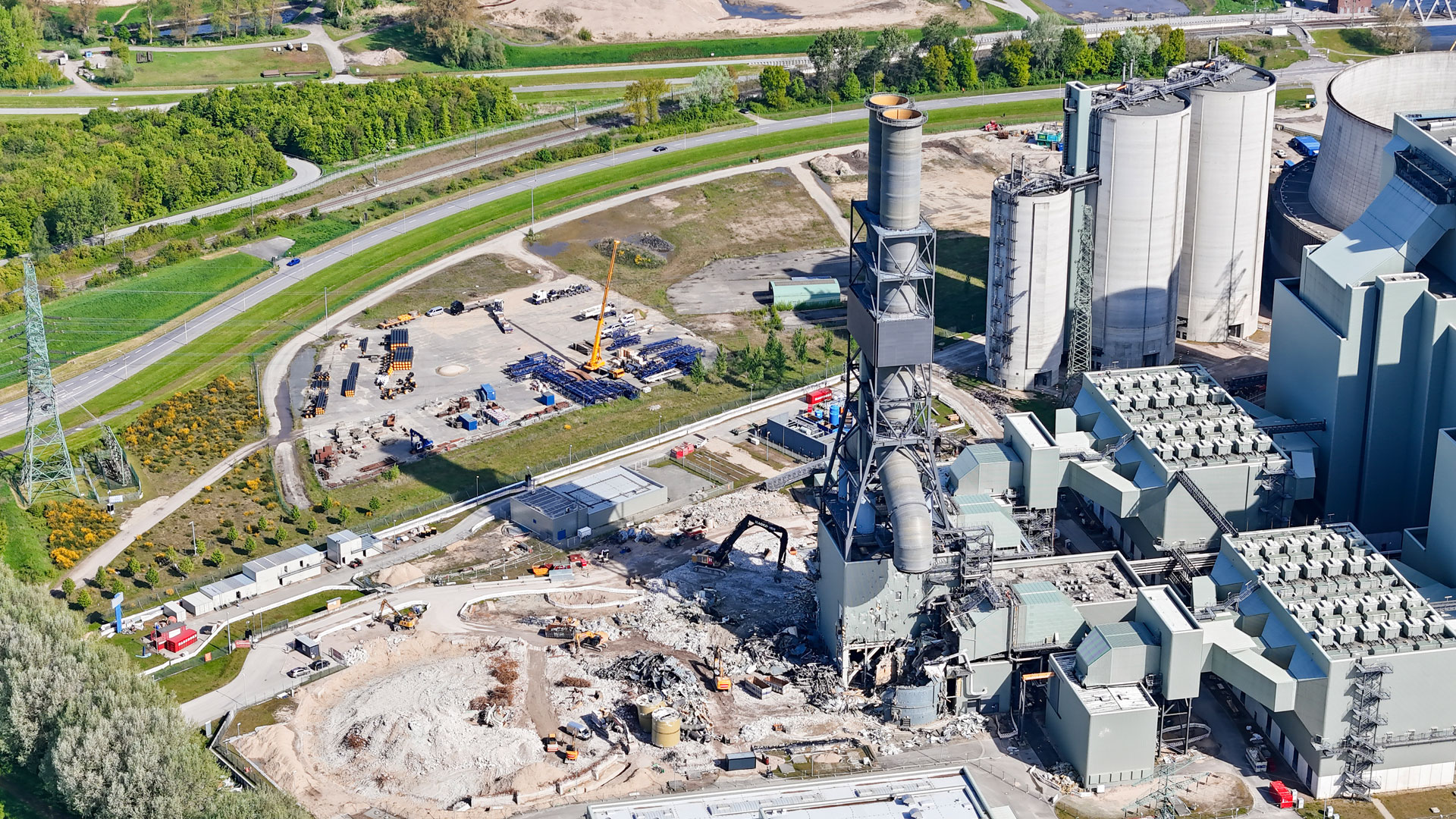Methanol: one more step towards decarbonisation
Alternative fuels, including green methanol, play a central role in Hapag-Lloyd's goal of a net-zero fleet by 2045. They will be crucial to the energy ...

By:Ralf Johanning
POHM: In July, the time had finally come – Federal Minister of Economic Affairs Robert Habeck submitted the funding approvals for not one, but two hydrogen projects. Among them were the funds for the Hamburg Green Hydrogen Hub (HGHH) project. How important is this for you?
Christian Heine: Extremely important. In fact, the funding is crucial for the project to go ahead. We have to be honest about that. Many other technologies, such as photovoltaics and wind power, received initial funding support to help them become competitive. The production of green hydrogen also involves technologies that are only just beginning to play a role in the energy mix. The local production and distribution of green hydrogen will only be able to achieve a breakthrough in Germany if we provide financial support for the initial phase. In light of this, we are relieved that not only our consortium with our partner Luxcara, but also the HH-WIN project of our municipal sister company Gasnetz Hamburg have received funding. Now, nothing stands in the way of the hydrogen economy taking off in Hamburg.
We were also particularly pleased that Robert Habeck came to present us with the funding decision in person. In mid-August, the German Federal Minister for Economic Affairs and Climate Action visited the Moorburg site to see firsthand the progress of the dismantling work, the preparation of the site for the Hamburg Green Hydrogen Hub, and the hydrogen grid connection.
As you just mentioned: the former Moorburg coalfired power station is at the heart of the HGHH. An electrolyser is to be built here. How far along are the works?
The first and most important step is to clear the site for the future electrolyser. Dismantling work at the former Moorburg coal-fired power station began several months ago and is progressing well. We expect to have cleared all the necessary areas by the middle of next year, after which we can start with the construction of the electrolysis plant.

Can any of the existing infrastructure be re-used?
Several components of the former coal-fired power station can still be used. This makes the overall project particularly sustainable and also makes economic sense. These components include the water treatment plant as well as the workshop and storage building. The existing connection to the high-voltage grid will be converted and relocated.
What’s next?
The next step in the project will be ordering the electrolyser. The tender has already been issued and we are confident that we will be able to announce the successful bidder and award the contract in a few weeks’ time.
You’re aiming to achieve 100 megawatts in the first expansion phase. When will this be complete?
Even though we can reuse components, the construction of an electrolyser is a lengthy process. We expect to start commercial operations in 2027.

For context: what does a production capacity of 100 megawatts look like? How many companies would that supply?
We estimate that Hamburg will require up to three billion cubic metres of hydrogen per year in the future to replace all fossil fuels in industry and commerce. With an electrolysis capacity of 100 megawatts, we can produce around 10,000 tonnes of green hydrogen in Moorburg, which is equivalent to around 110 million cubic metres. It is important to note that the 100 megawatts is just a starting point. Our expectation is that the Moorburg site will have an electrolysis capacity of up to 800 megawatts in the future.
Are there already interested parties for the hydrogen?
Yes, certainly. We are working with the consortium to build a portfolio of hydrogen users across a range of industries and are already in discussions with many of these companies. For a number of industrial companies, hydrogen is the only option for successful decarbonisation. Hence, we are not worried that there will be difficulties on the demand side.
Looking back, what were the biggest hurdles?
The biggest hurdle was certainly the lengthy process with the European Union. We were eagerly awaiting progress in this process. Like many other electrolysis projects in Germany, we have had to be very patient over the past few years. Towards the finish line, we were also concerned that the federal government might not be able to provide funding due to austerity measures in the federal budget. All the more reason for us to be delighted that our project in Hamburg can now come to fruition.
The former consortium consisting of Mitsubishi Heavy Industries, Shell, Vattenfall and Hamburger Energiewerke has been dissolved. You now have a new partner, Luxcara. Could you describe the nature of your collaboration?
Luxcara became the majority shareholder in the consortium last year with a 74.9 per cent stake after acquiring the shares from Shell and Mitsubishi Heavy Industries. Luxcara is a company with proven expertise in delivering complex sustainable energy infrastructure projects. Working with Luxcara is straightforward and focused on making swift decisions. This helps the project to progress quickly. At the time, there were a number of parties interested in acquiring the shares held by Shell and Mitsubishi. In retrospect, however, it has become clear that the “Hamburg solution”, i.e. the decision in favour of Luxcara, was precisely the right one.
Have you already decided where the electricity for production will come from?
For regulatory reasons, green hydrogen must be produced from renewable electricity. Only then can the electrolysis process be carbon-free, and the resulting green hydrogen be sustainably used for the decarbonization of industry. That is why Luxcara was the ideal partner for this consortium. Luxcara has an extensive green electricity portfolio and also possesses extensive experience and an impressive track record in long-term power purchase agreements.
On the other hand, there is also the question of how to get the hydrogen to the customer.
For the transport of hydrogen, a dedicated transport network is being established in Hamburg. A pipeline network with an initial length of 40 kilometres is planned. It will start at the Moorburg site and will be extended to future customers in the Hamburg port area. Once this initial network has been established, further expansion of the hydrogen infrastructure is planned, including the conversion of a number of existing natural gas pipelines to carry hydrogen.
Who will be responsible for this?
The hydrogen transport network is being built by Gasnetz Hamburg, which has also been successful with its HH-WIN infrastructure project and is funded by IPCEI.
Gasnetz Hamburg is also a municipal company. At what levels are you working together on hydrogen production?
As a network operator, Gasnetz Hamburg is not involved in the production of hydrogen, but has the important task of transporting the produced hydrogen to the customers. Gasnetz Hamburg is responsible for building this distribution network infrastructure, and we look forward to working with them.
To drive forward the decarbonisation of the Port of Hamburg, you have formed a joint venture with the Hamburg Port Authority (HPA). What will the new company “Erneuerbare Hafenenergie Hamburg GmbH” be doing?
The main focus of the Erneuerbare Hafen Energie Hamburg GmbH will be the expansion of wind and solar power plants in the Hamburg port area and the development of renewable energy solutions. We hope that the joint venture will bring the best possible climate policy benefits to the city of Hamburg, with the HPA providing the necessary land and us contributing our expertise in building and planning renewable energy production facilities.
What is the purpose of the joint venture?
We intend to drive forward the decarbonisation of the Port of Hamburg with this joint venture. In the medium term, a large proportion of the electricity needs of the port industry, the HPA, and the port companies will be met using renewable energy sources such as wind power and ground-mounted photovoltaic systems. We are delighted to be working with the HPA to drive forward the expansion of renewable energy in Hamburg.
What expertise does Hamburger Energiewerke bring to the table?
We are already operating 22 wind turbines and 37 photovoltaic systems in Hamburg and have many years of experience in planning, building, and operating these systems. We are making this expertise available and are supporting the HPA and the city of Hamburg in their efforts to achieve climate-neutral port operations.
What happens next?
Potential sites for the construction of renewable energy production facilities have already been identified. The next step will be a detailed assessment of each site to determine whether it is suitable for approval.
Now for a glimpse of what lies ahead. When do you think Hamburg will be able to run entirely on sustainable electricity?
When it comes to supplying Hamburg with electricity, we need to look beyond the borders of our city-state. Over the past few decades, we have never been in a position to supply our own needs. In this respect, the question can only be answered within a broader geographical context. Today, more than 50 per cent of Germany’s electricity mix comes from renewables, and we are also seeing a record number of new PV and wind power plants being approved. This makes me optimistic that we will achieve the goal of climate-neutral power generation within the next two decades.